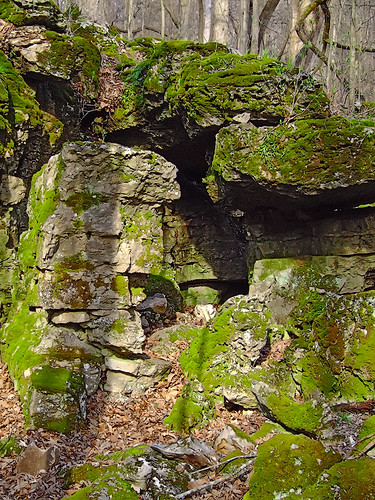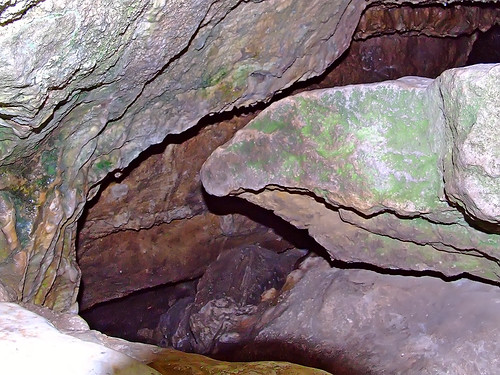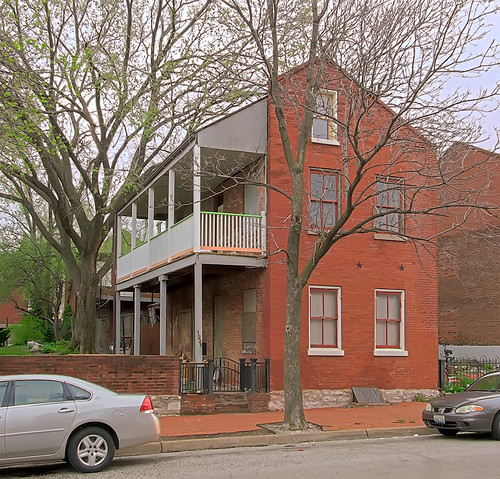ROCKWOODS RESERVATION in western Saint Louis County, Missouri, is one of the oldest conservation areas in the state, dating from 1938, and has long been a favorite place for my family. Here are some photos of the flora, fauna, and minerals of that park.

A view from a lookout point, near sunset. The ranger station and road down below are invisible among the trees.

A Redbud tree (
Cercis canadensis). In other parts of the world, this species is called the Judas tree.

Spring Beauty (
Claytonia virginica), one of the earliest opening flowers in the state.

Common violet (
Viola sororia)

Dutchman's breeches (
Dicentra cucullaria).
 Trillium
Trillium species, almost ready to bloom.

This is not a pristine forest, and the works of man are evident. This stone wall was once part of a raised railroad bed, used to haul stone out from the quarries.

Moss covers most rock surfaces in sheltered areas.

This cliff was once likely a wall of a quarry.

Rockwoods has many caves, including these at the bottom of the cliff.

The interior of one of the caves. The entrance is rather awkward, and I didn't want to get muddy, so I just put my camera into the narrow cave opening.

Another cave. Generally speaking, Missouri's caves tend to be 'living', that is, are still being formed and enlarged due to the action of flowing water. The state's caves are also teeming with life, often with many rare species that are only found in a few caves.

A Whitetail deer (
Odocoileus virginianus)


A rich, moist meadow at the bottom of an old quarry. The paths seen here have numerous deer hoof-prints.

Further down the quarry floor is this swamp, with large blocks in the background.

It is hard to tell if this pile of boulders is natural, or if they were placed here by quarrymen.

A close-up of sponge-rock. Water slowly dissolves the stone, eventually leading to the formation of caves. This porous limestone was often used in decorative stonework. Increased standardization in construction has led to the disuse of interesting local materials such as this.

This flower looks like it may be from the Rose family.

Ferns, which thrive in coolness, shade, and moisture, are abundant on this particular north-facing, sheltered hillside.

Young fern fronds, called fiddleheads or croziers, are considered a delicacy: but they have to be carefully cooked and eaten sparingly.


The upper reaches of the hills are covered by flint, used by the Indians to make arrowheads and other tools.



While the uplands at Rockwoods have many caves, the valley floor has many springs.


The ranger station has a small museum, including these native animals. This is a Rough Green Snake (
Opheodrys aestivus).

Tarantulas are normally thought of a desert species; in the United States these are usually found in the desert Southwest. Missouri has no deserts, but dry, exposed, and rocky south-facing slopes — called glades — are good habitat for tarantulas, scorpions, and other desert species. This is a Brown Tarantula (
Aphonopelma hentzi), and is as big as your hand. I've been told that they make good pets.

This is a Speckled Kingsnake (
Lampropeltis getulus holbrooki). Like the other snake shown here, this is a harmless species. However, big, deadly poisonous vipers
are commonly found in Missouri, including Copperheads, Cottonmouths, and Rattlesnakes












































